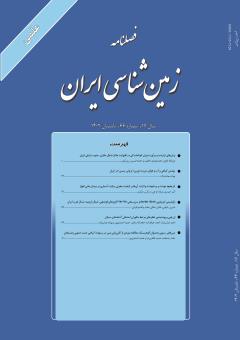تاریخچه نهشت و پسانهشت و اثرات آن¬ها بر کیفیت مخزنی سازند آسماری در میدان نفتی اهواز
محورهای موضوعی :اکبر حیدری 1 * , میلاد فرجی 2 , نرگس شکری 3
1 - گروه زمینشناسی نفت و حوضههای رسوبی، دانشکده علوم زمین، دانشگاه شهید چمران اهواز، اهواز، ایران
2 - گروه زمین شناسی نفت و حوضه های رسوبی، دانشکده علوم زمین، دانشگاه شهید چمران اهواز، اهواز، ایران
3 - گروه زمین شناسی نفت و حوضه های رسوبی، دانشکده علوم زمین، دانشگاه شهید چمران اهواز، اهواز، ایران
کلید واژه: چینه¬نگاری سکانسی, دیاژنز, سازند آسماری, رخساره رسوبی, محیط رسوبی, , مخزن,
چکیده مقاله :
توالی¬های کربناته سازند آسماری همراه با نهشته¬هایی از ماسه¬سنگ در اغلب نواحی حوضه رسوبی زاگرس از جمله ناحیه اهواز در بازه زمانی الیگو - میوسن ته¬نشین شده¬اند. در این مطالعه اثرات محیط¬های رسوب¬گذاری و پس از رسوب¬گذاری بر کیفیت مخزنی زون A7 سازند آسماری در چاه¬ شماره 4 میدان نفتی اهواز مورد مطالعه قرار گرفته است. مطالعه توالی¬های سازند آسماری در این برش منجر به شناسایی تعداد 11 رخساره کربناته، یک رخساره تبخیری، یک رخساره آمیخته کربناته - آواری و یک رخساره سیلیسی آواری شد. محیط¬های رسوبی پهنه جزر و مدی، لاگونی، ریف مرجانی و دریای باز برای ته¬نشینی رخساره¬های شناسایی شده معرفی شده است. با توجه به عدم وجود تغییرات ناگهانی، به نظر می¬رسد نهشته¬های مورد مطالعه در یک پلتفرم کربناته نوع رمپ ته¬نشین شده¬-اند که تحت اثر ورود رسوبات سیلیسی-آواری از سیستم¬های رودخانه¬ای زاگرس بوده است. همچنین از فرآیندهای دیاژنتیکی که توالی¬های مورد بررسی را تحت تأثیر قرار داده¬اند می¬توان به میکرایتی¬شدن، سیمانی¬شدن، نئومورفیسم افزایشی، تراکم فیزیکی و شیمیایی، انحلال، شکستگی و پرشدگی، دولومیتی¬شدن و انیدریتی¬شدن اشاره نمود که در محیط¬های پسارسوبی دریایی، متئوریک و تدفینی رخ داده¬اند. بسیاری از شکستگی¬ها توسط مواد نفتی پر شده¬اند که این نشاندهنده این موضوع است که شکستگی¬ها در کنار دولومیتی¬شدن، تراکم شیمیایی و روزنه¬های فنسترال از مهمترین عارضه¬های پسارسوبی جهت افزایش کیفیت مخزن هستند. درحالیکه سیمانی¬شدن و انیدریتی¬شدن با بستن فضاها در کاهش کیفیت مخزن اثرگذار بوده¬اند.
The carbonate interval of the Asmari formation along with sandstone deposits were deposited in most areas of the Zagros sedimentary Basin, including the Ahvaz area, in Oligo-Miocene. In this study, the effects of depositional and post-depositional environments on the reservoir quality of zone A7 of the Asmari Formation in well No. 4 in Ahvaz oil field were studied. The study of the sequences of the Asmari Formation in this section led to the identification of 11 carbonate facies, one evaporite facies, one mixed carbonate-siliciclastic facies, and one siliciclastic facies. Sedimentary environments of tidal zone, lagoon, coral reef and open sea were introduced for the depositional environment of identified facies. Due to the absence of sudden changes, it seems that the studied deposits were deposited in a ramp-type carbonate platform that was influenced by siliciclastic sediments from the Zagros river systems. The immature sedimentary texture of the sandstone facies indicates the proximity of the origin of the quartz sources to the carbonate basin. Among the diagenetic processes that have affected the examined sequences, the following processes can be mentioned: micritization, cementation, neomorphism, physical and chemical compaction, dissolution, fracture development and filling, dolomitization, and anhydritization. These diagenetic processes occurred in post-depositional marine, meteoric and burial diagenetic environments. Many fractures were filled with petroleum, which indicates that fractures, along with dolomitization, chemical compaction, and fenestral pores, are among the most important post-sedimentation complications to increase reservoir quality. While cementation and anhydritization resulted in reducing the reservoir quality by closing the pore spaces .

